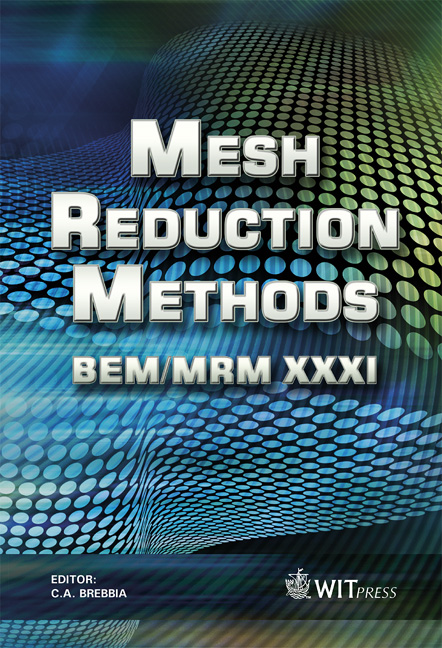The Radial Basis Integral Equation Method For Convection-diffusion Problems
Price
Free (open access)
Transaction
Volume
49
Pages
10
Page Range
95 - 104
Published
2009
Size
472 kb
Paper DOI
10.2495/BE090091
Copyright
WIT Press
Author(s)
T. T. Bui & V. Popov
Abstract
The Boundary Element Dual Reciprocity Method has been implemented as a meshless approach. The method uses circular sub-domains with overlapping distributed inside the original domain of the problem. Since the source point is always in the centre of the circular sub-domain singular integrals are avoided regardless of the order of the derivative of the original integral equation. Three equations for two-dimensional (2D) potential problems are required at each node. The first equation is the usual BEM integral equation arising from the application of the Green’s identities and the remaining equations are the derivatives of the first equation in respect to space coordinates. In the current approach Radial Basis Function interpolation is applied to obtain the values of the field variables and partial derivatives at the boundary of the circular subdomains. Dual reciprocity method (DRM) has been applied to convert the domain integrals into boundary integrals. The method has been tested on a convection-diffusion problem. The results obtained using the current approach are compared to previously reported results obtained using the Finite Element Method (FEM), and the DRM multi-domain approach (DRM-MD) showing similar level of accuracy. Keywords: meshless method, integral equations, circular sub-domains, radial basis functions.
Keywords
meshless method, integral equations, circular sub-domains, radial basis functions





